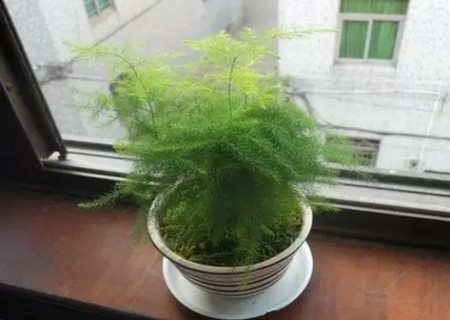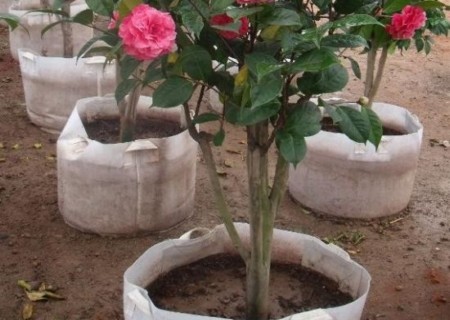Ramet method of Cymbidium grandiflorum
Cymbidium has many varieties, large petals, bright colors and many colors, such as red, yellow, green, white, pink, purple and various transitional and compound colors, the flower stem is erect and firm, the florescence is long, and it can be used as a pot or fresh cut flower. It is deeply loved by the majority of flower friends and has become one of the most widely cultivated Cymbidium in the world.
As a rule, when the plant is too large, the plant should be changed and put on the pot in order to promote growth and flowering. The time to change the basin should be carried out after flowering or when the new buds are just sprouting in early spring. Before changing the basin, pour the plant out of the old basin, cut off the rotten roots and yellow leaves, remove the old matrix, and then put a layer of broken tiles or bricks at the bottom of the new basin to facilitate drainage and ventilation, put the plant into the basin, fill in the new substrate, and pour water through hand compaction.

In general, the propagation method of Cymbidium is plant-by-plant reproduction:
1. The timing of ramet is the short dormancy period after flowering and before the new bud grows.
2. Ramet is carried out when the root of the plant is slightly whitish, soft and dry.
3. Robust plants can be divided once in 2-3 years, and the cut orchid seedlings should have 2-3 pseudobulbs in each clump.
4. Smear sulfur powder or carbon powder on the wound of the plant to avoid infection
5. After placing the orchid seedlings in a dry place for 1-2 days, they can be potted alone and propagated successfully.
Cymbidium grandiflorum is usually propagated by the method of plant division, and the suitable time for plant division is from the flower to the time before the new bud grows, once every 2-3 years. In short, the sturdy plant is taken out of the basin and cut off from the junction of the pseudocorm with a sharp knife and cut into several clumps, each with 2-3 pseudocorms (one of which must be newly formed the previous year). Smear the incision with sulfur powder or charcoal powder in time, put the new plant in a dry place and dry for 1-2 days, then put it into the basin separately.
The upper pot of Cymbidium should choose the vegetable burning pot with high depth and good permeability. According to the different needs of different varieties, the washed water moss, bark, charcoal block, stone, broken brick, peat and so on were mixed into cultivated soil with different water retention (moisture) properties, and their pH values were between 5.5and 6.0.
When planting, note that the pseudo-corms must all be exposed to the surface of the culture soil. Put it in the half-shade and half-sun place after planting, because the cultivated soil is wet, so avoid watering within 1 week after planting, only spray water on the leaf surface (usually 4-6 times a day), and gradually turn to normal maintenance after 1 week.
Matters needing attention for ramet propagation of Cymbidium:
The main results are as follows: 1. Cymbidium should be placed in the semi-shade after splitting.
2. Cannot be watered immediately. If the basin soil is found to be too dry, you can spray a small amount of water to the page and basin surface.
3. The new bud base can not be watered normally until the new root grows.
4. Observe the health of the plant to avoid the phenomenon of leaf drying, shedding and pseudo-bulb shrinkage (rehydration).
Time: 2019-06-10 Click:
- Prev

Propagation methods of potted asparagus
There are many friends who like asparagus. Although asparagus is not bamboo, its branches are jointed and its posture is very beautiful. Many friends who cultivate asparagus do not know how to reproduce asparagus. In fact, family potted asparagus can also be propagated by ramets. Asparagus has a strong tufted nature.
- Next

Illustration of grafting method of potted Camellia
Camellia is a kind of tree species which is difficult to survive by grafting. In order to improve the survival rate of grafting, on the one hand, we should master the grafting skills, on the other hand, we must use some special grafting methods. Select the scion according to the resources of the variety, and then make a reasonable collocation according to the operator's personal preference.
Related
- Fuxing push coffee new agricultural production and marketing class: lack of small-scale processing plants
- Jujube rice field leisure farm deep ploughing Yilan for five years to create a space for organic food and play
- Nongyu Farm-A trial of organic papaya for brave women with advanced technology
- Four points for attention in the prevention and control of diseases and insect pests of edible fungi
- How to add nutrient solution to Edible Fungi
- Is there any good way to control edible fungus mites?
- Open Inoculation Technology of Edible Fungi
- Is there any clever way to use fertilizer for edible fungus in winter?
- What agents are used to kill the pathogens of edible fungi in the mushroom shed?
- Rapid drying of Edible Fungi

